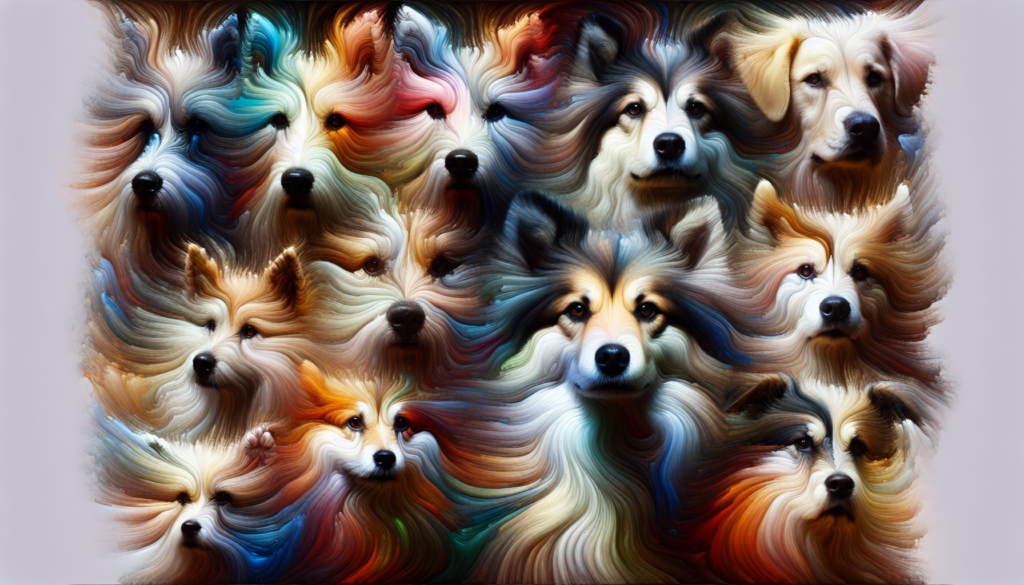If you’re a dog lover, then you are likely well aware of the sheer variety of breeds that exist in this world. But have you ever ventured into the fascinating realm of designer dog breeds? These unique and hybrid canines are a result of purposeful crossbreeding, bringing together the best qualities of different breeds to create something truly extraordinary. From the adorable Goldendoodle to the charming Labradoodle, this article will take you on a journey through the enchanting world of designer dog breeds, highlighting their popularity, characteristics, and the joy they bring to their lucky owners. Prepare to be amazed by the infinite possibilities that arise when imagination and skillful breeding combine!
Choosing a Designer Dog Breed
When it comes to choosing a designer dog breed, there are several factors you should consider. It’s important to think about the size, activity level, and temperament of the breed that would best fit your lifestyle and preferences. You should also take into account any specific health issues that may be associated with certain designer breeds. By carefully considering these factors, you can find the perfect designer dog breed that will bring joy and companionship to your life.
Understanding Designer Dog Breeding
Designer dog breeding is a relatively recent phenomenon that began in the late 20th century. It involves crossbreeding two purebred dogs of different breeds to create a new hybrid breed with specific desirable traits. The purpose of designer dog breeding varies, but it often aims to combine the best qualities of both parent breeds. However, there are ethical concerns surrounding this practice, which we will explore further in this article.

Characteristics of Designer Dog Breeds
Designer dog breeds can have a wide range of physical appearances, temperaments, and exercise and grooming needs. Their appearance can take after either parent breed or be a unique combination of both. Similarly, their temperament and personality traits can vary, so it’s important to research each breed individually to find one that matches your lifestyle and preferences. Additionally, their exercise and grooming needs can range from low-maintenance to high-maintenance, so be sure to consider your ability and willingness to provide the necessary care.
Training and Socialization of Designer Dogs
Training a designer dog can be a rewarding experience, but it requires patience and consistency. Positive reinforcement techniques, such as treats and praise, tend to work well with designer breeds. Additionally, early socialization is crucial for helping your dog adapt to various situations, people, and other animals. By exposing your designer dog to different environments and experiences from an early age, you can help prevent behavioral issues and ensure they grow up to be well-rounded and confident companions.

Health Considerations for Designer Dog Breeds
One important aspect to consider when choosing a designer dog breed is their genetic health issues. Some designer breeds are prone to certain health conditions that are common in their parent breeds. For example, Labradoodles and Goldendoodles may be at risk for certain eye disorders or hip dysplasia. It’s essential to research the health issues that may affect your desired breed and ensure that responsible breeding practices, including health testing and certifications, have been followed to minimize these risks.
Popular Designer Dog Breeds
There are several popular designer dog breeds that have gained popularity in recent years. Labradoodles, a cross between a Labrador Retriever and a Poodle, are known for their friendly and intelligent nature. Goldendoodles, a mix of a Golden Retriever and a Poodle, are cherished for their loving and social personalities. Cavapoos, a cross between a Cavalier King Charles Spaniel and a Poodle, are adored for their affectionate and gentle nature. Other popular designer breeds include Yorkipoos, Pomskies, Bichon Frises, Cockapoos, Shih-poos, Maltipoos, and Chiweenies.
Designer Dogs and Crossbreeding Terminology
When researching designer dog breeds, you may come across certain terms that refer to the generation or breeding methods used. F1 indicates the first generation offspring of two purebred dogs of different breeds, while F2 refers to the second generation, and so on. Multigenerational crosses are obtained by breeding two designer dogs of the same breed. Backcrossing involves breeding a designer dog with one of its parent breeds. Line breeding is a breeding method that aims to preserve desirable traits within a breed. It’s important to understand these terms to better comprehend the background and characteristics of the designer dog you are interested in.
The Controversy Surrounding Designer Dogs
Designer dogs have received criticism due to the connection with unethical breeding practices, such as puppy mills. Puppy mills prioritize profit over the welfare of animals and often produce puppies in mass quantities without proper health care or humane living conditions. Responsible breeding is essential for ensuring the well-being of designer dogs and preventing genetic health issues. If you choose to get a designer dog, it’s crucial to find a reputable breeder who prioritizes the health and happiness of their dogs.
Designer Dogs in Pop Culture
Designer dogs have gained popularity not only as beloved family pets but also in the world of pop culture. Many celebrities have embraced designer dog breeds and become proud owners. From Labradoodles to Cockapoos, these adorable and fashionable dogs have captured the hearts of celebrities and their fans alike. Furthermore, designer dogs have made appearances in movies and TV shows, often depicted as lovable and intelligent companions. Their presence in pop culture has undoubtedly contributed to the rise in popularity of designer dog breeds.
Conclusion
Choosing a designer dog breed that fits your lifestyle and preferences is an exciting endeavor. By considering factors such as physical appearance, temperament, exercise and grooming needs, and training and socialization requirements, you can find the perfect companion to enrich your life. However, it is essential to be aware of the ethical concerns surrounding designer dog breeding and to prioritize responsible breeding practices. Whether you decide to adopt a designer dog or choose a purebred, the most important thing is to provide a loving and caring home for your furry friend.

